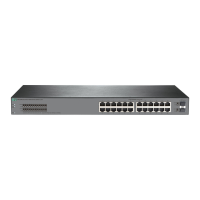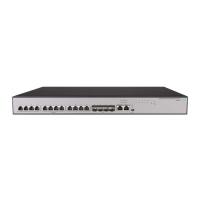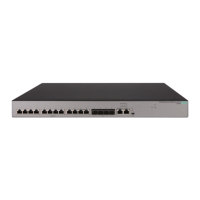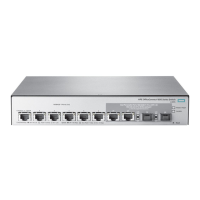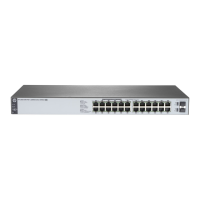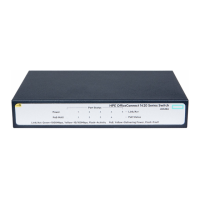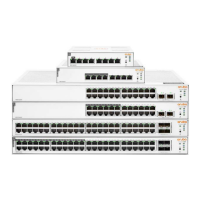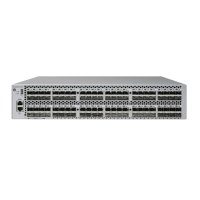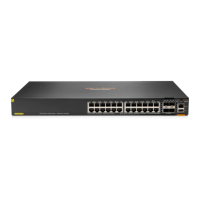Page 36 Port Configuration
4 Switching Features
You can use the Switching pages to configure port operation and various Layer 2 features and capabil-
ities.
Port Configuration
You can use the Port Configuration pages to display port status, configure port settings, and view sta-
tistics on packets transmitted on the port.
Port Status
The Port Status page displays the operational and administrative status of each port and enables port
configuration. To view this page, click Switching > Port Configuration in the navigation pane.
Figure 16. Port Status Page
Table 11. Port Status Fields
Field Description
Interface The port or trunk ID.
Type The interface type, which can be one of the following:
Normal—The port is a normal port, which means it is not a Link Aggregation Group
(LAG) member or configured for port mirroring. All ports are normal ports by default.
Trunk Member—The port is a member of a trunk.
Mirrored—The port is configured to mirror its traffic (ingress, egress, or both) to another
port (the probe port).
Probe—The port is configured to receive mirrored traffic from one or more source ports.
Admin Mode The administrative mode of the interface. If a port or trunk is administratively disabled, it
cannot forward traffic.
Enabled: Administratively enabled.
Disabled: Administratively disabled.
D-Disabled: Automatically disabled by the system due to error conditions. For example,
an interface may be disabled if it exceeded its rate limit. Please see error logs for more
information.
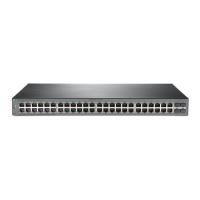
